Asia is the largest continent in the world in terms of land and population. Its countries are diverse and include some of the world’s most populous and fastest-growing nations. The economies of these countries are equally diverse, including oil-rich lands, high-tech innovators, and tourist hotspots.
In this post, we’ll look at the richest countries in Asia. We’ve ranked the 20 richest Asian countries based on GDP (PPP) per capita. The data comes from estimates made by the International Monetary Fund, which is a financial agency of the United Nations.
| Rank | Country | GDP (PPP) per capita in Int$ |
| 1 | Singapore | $102,742 |
| 2 | Qatar | $97,262 |
| 3 | Macau | $90,606 |
| 4 | Brunei | $64,405 |
| 5 | Hong Kong | $62,839 |
| 6 | United Arab Emirates | $59,844 |
| 7 | Taiwan | $59,398 |
| 8 | Bahrain | $50,284 |
| 9 | Saudi Arabia | $48,099 |
| 10 | South Korea | $47,027 |
| 11 | Japan | $44,585 |
| 12 | Israel | $42,570 |
| 13 | Cyprus | $41,595 |
| 14 | Kuwait | $41,507 |
| 15 | Turkey | $32,278 |
| 16 | Oman | $30,404 |
| 17 | Malaysia | $29,340 |
| 18 | Kazakhstan | $27,560 |
| 19 | Maldives | $23,343 |
| 20 | Thailand | $19,004 |
Interactive Map Showing the Riches Countries in Asia
What is purchasing power parity (PPP)?
PPP is a theoretical measurement of the relative values of different currencies. The measurement is based on a comparison of the cost of the same basket of goods in different locations. This comparison should illuminate the purchasing power of different currencies.
PPP is relevant when comparing GDP per capita in different countries because it more accurately reflects the relative monetary value in relation to purchasing power.
In simpler terms, PPP shows what the GDP per capita would be if the cost of living were the same in each country.
What are international dollars (Int$)?
Also known as the Geary-Khamis dollar, international dollars are hypothetical units of currency used to compare the economic output of different countries.
They are often used in conjunction with PPP to make comparisons that are more meaningful than what would be achieved based on the exchange rates between currencies. International dollars also have the benefit of not fluctuating over time.
20. Thailand
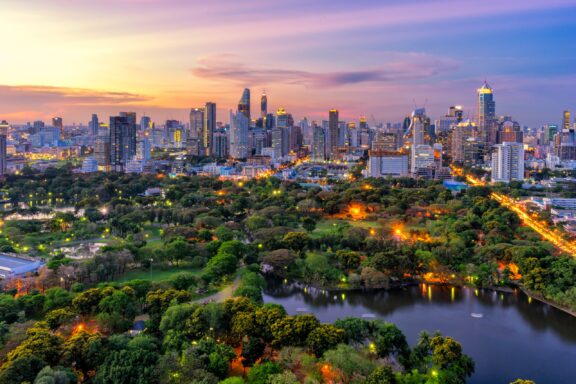
GDP (PPP) per capita: $19,004
Thailand is famous around the world for being an idyllic tourist locale, and indeed there are many reasons to visit Thailand: stunning beaches, unique cuisine, and Thai massages, to name a few. But tourism is only one part of what drives the Thai economy.
The country is highly dependent on exports, which account for more than two-thirds of Thailand’s GDP, according to a 2017 estimate. Top exports include cars, computers, electrical appliances, rice, and textiles.
Although it has now been surpassed by India and Vietnam, Thailand was the world’s leading producer of rice for many years. About 30% of the Thai workforce is employed in the agricultural sector.
19. Maldives
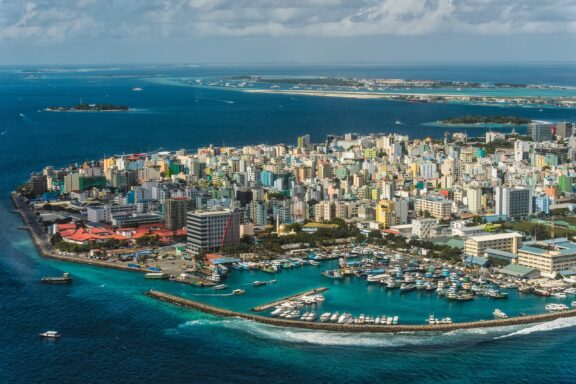
GDP (PPP) per capita: $23,343
Not everyone can point to the Maldives on a map, but it makes the top 20 richest countries in Asia. The Maldives is an archipelagic state in South Asia and one of the smallest countries in the world.
The Maldives was once referred to as the “Money Isles” by Arab traders for the huge amounts of cowry shells, an ancient form of international currency, that the islands produced. The nation then became one of the poorest countries in the world during the 1970s before transitioning to a tourism-dependent economy over the next few decades.
The fishing and shipping industries also play a significant role in supporting the economy of the Maldives.
18. Kazakhstan
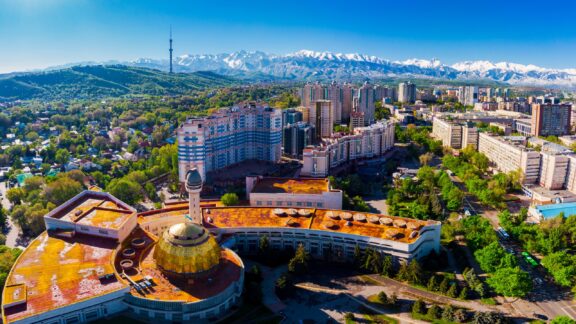
GDP (PPP) per capita: $27,560
Kazakhstan is located primarily in Central Asia, but it also extends into part of Eastern Europe. It is the largest landlocked country in the world and has one of the lowest population densities of any country.
The economy of Kazakhstan is largely supported by its access to oil and natural gas, which enabled it to become the first former Soviet Republic to repay its entire debt to the International Money Fund. Other major exports include wheat, textiles, livestock, and uranium.
Roughly 18% of the workforce in Kazakhstan is involved in agriculture; the services sector is estimated to employ more than 60% of the country’s workers.
17. Malaysia
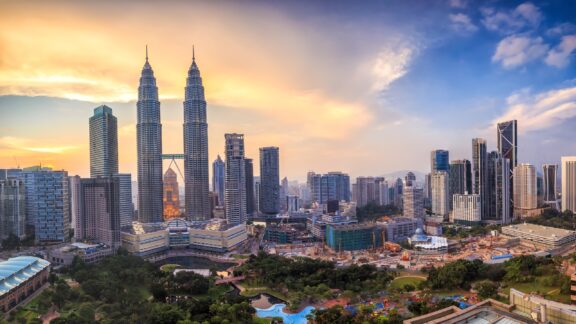
GDP (PPP) per capita: $29,340
In addition to ranking among the richest countries in Asia, Malaysia is one of the safest countries in the world. It’s located in Southeast Asia and has the fourth-largest economy in the region.
International trade is one of the most productive industries in Malaysia and employs around 40% of the labor force in the country. Natural resources like palm oil, rubber, and petroleum also provide economic security.
Growing steadily over several decades, the Malaysian economy benefits from continued foreign investments; it is considered an upper-middle-income country by the World Bank. The employment rate in Malaysia is under 4%.
16. Oman
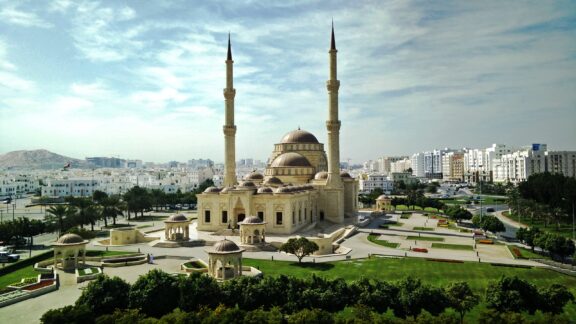
GDP (PPP) per capita: $30,404
While it may not seem like it’s on the same continent as Malaysia and Thailand, Oman is technically located in Asia. It’s also one of the richest Arab countries in the world, situated at the eastern end of the Arabian Peninsula in the Middle East.
The great majority of Oman’s economic success is tied to oil exports, on which it is heavily dependent. Over 70% of the country’s exports are mineral fuels including oil. Although oil products still dominate the economy, diversification efforts are underway.
Tourism, fishing, and logistics are some of the fastest-growing sectors in Oman’s economy, with tourism developing the fastest among these.
15. Turkey
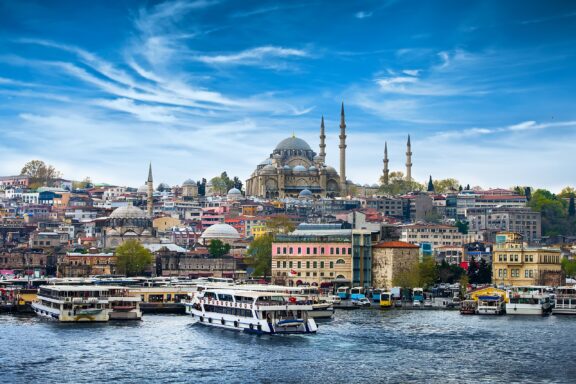
GDP (PPP) per capita: $32,278
It’s worth noting that although Turkey is located mostly on the Asian continent, it also stretches into Eastern Europe. The European portion of Turkey accounts for 3% of the country’s land mass and 14% of its population.
One of the strengths of Turkey’s economy is its diversity. There are strong private and state sectors, and the country produces a great deal of agricultural products, textiles, and automobiles.
Turkey’s strategic location and modern infrastructure have also made it an important center for international trade and commerce. In recent years, Turkey’s economy has struggled with extreme inflation and a devalued currency.
14. Kuwait
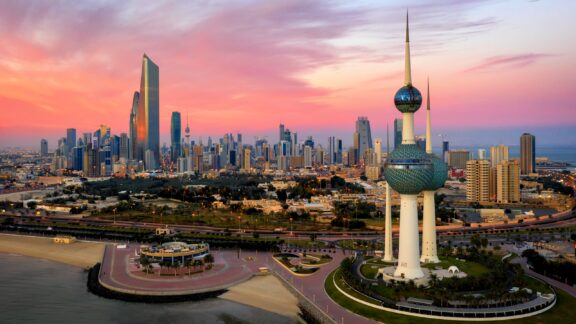
GDP (PPP) per capita: $41,507
Kuwait is among the 10 richest Arab countries in the world and comes in at number 14 on this larger list of wealthy Asian countries. Although recent efforts have been made to diversify Kuwait’s economy, it is still heavily dependent on oil.
The Kuwaiti government owns the Kuwait Petroleum Corporation (KPC), which runs the country’s oil sector and has established a number of policies to ensure the industry’s stability and growth. Oil accounts for around 70% of the country’s export earnings.
In order to diversify its economy, Kuwait has focused on developing its financial, healthcare, and education sectors. Corruption in the country has slowed these efforts, but steps to combat corruption are also being taken.
13. Cyprus
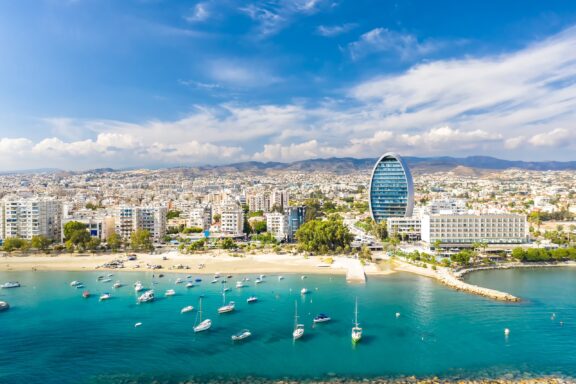
GDP (PPP) per capita: $41,595
It may come as a surprise that Cyprus is included in this list of richest Asian countries. In most contexts, Cyprus is not associated with Asia — instead, it has very strong political and cultural ties to Southern Europe. However, Cyprus is geographically located in Western Asia.
Cyprus has a mixed economy, and although the island nation experienced economic downturns in the 2012-2013 Cypriot financial crisis and during the COVID-19 Pandemic, its economy has been recovering.
Some of the biggest industries in Cyprus are tourism, financial services, and shipping. The country’s low tax rates have also made it an appealing location for offshore businesses.
12. Israel
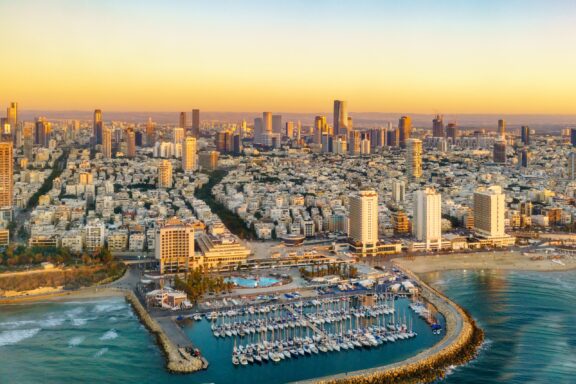
GDP (PPP) per capita: $42,570
Israel is another West Asian country on the list of richest Asian countries in terms of GDP per capita. Tel Aviv is the economic and technological center of the country, and Jerusalem is the political capital of Israel, although Israeli sovereignty over East Jerusalem is not internationally recognized.
In terms of economic development, Israel is often considered the most advanced country in Western Asia and the Middle East. In 2022, it had the most billionaires of any Middle Eastern country, ranking 18th globally.
Israel’s economy benefits from a highly skilled workforce and a quality university education system.
11. Japan
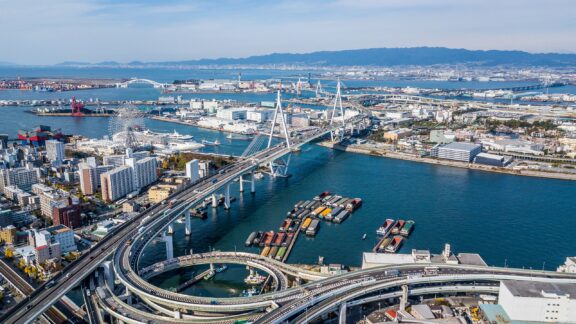
GDP (PPP) per capita: $44,585
In terms of total GDP in 2022, Japan was estimated to have the third-largest economy in the world. The East Asian country also has a low unemployment rate of 2.8% as of 2021, and the Japanese Yen is the third-largest reserve currency in the world.
Its highly advanced industrial and technological sectors are some of the stand-out industries in the country’s economy. Motor vehicles, iron and steel products, and semiconductors are some of Japan’s top exports.
Despite Japan’s position as one of the richest countries in Asia, it has the second-highest poverty rate among G7 countries as of 2020.
10. South Korea
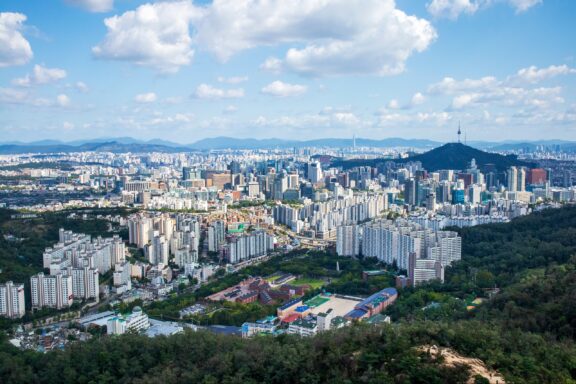
GDP (PPP) per capita: $47,027
The first country to make the top ten on this list of Asia’s richest countries in South Korea, with a GDP per capita of $47,027. Located on the southern end of the Korean Peninsula in East Asia, South Korea is a developed country with a high-income economy.
South Korea was formerly one of the poorest countries in the world, but it has climbed its way to one of the wealthiest in part because of the major investments it has made in the education of its population. The country’s workforce is highly skilled and educated, and the industrial and technological sectors are highly developed.
Exports are a large part of South Korea’s economy, and brands such as LG Electronics and Samsung have become internationally famous.
9. Saudi Arabia
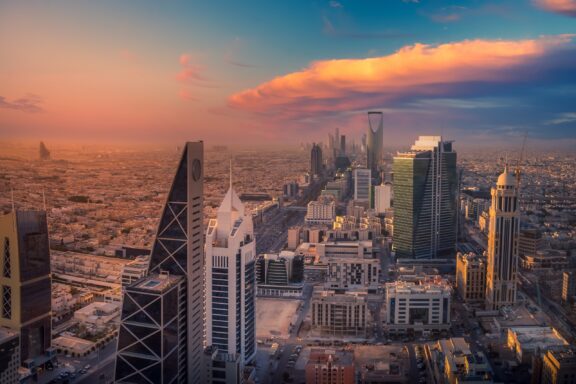
GDP (PPP) per capita: $48,099
The largest country on the Arabian Peninsula in Western Asia, Saudi Arabia is one of the richest countries in Asia. The economy of Saudi Arabia is heavily dependent on the oil sector, and crude petroleum is the country’s top export. Saudi Arabia possesses about 17% of the world’s proven petroleum reserves.
The Saudi government has introduced reforms in an attempt to diversify the country’s economy. Vision 2030 is an initiative that aims to leverage the country’s investment power and strategic location to diversify the economy and play a key role in international trade.
8. Bahrain
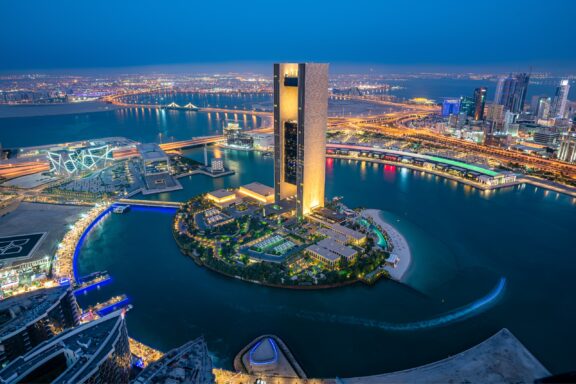
GDP (PPP) per capita: $50,284
Bahrain is the first country on this list to surpass the $50,000 mark for GDP per capita. It is an island nation in Western Asia and is one of the hottest countries in the world.
The economy of Bahrain is diversified and classified as high-income. One of the largest contributors to the country’s GDP is the financial sector, which has benefited from the regional economic growth driven by oil demand. Petroleum production and processing is an even greater part of the country’s economy.
Tourism is a growing part of Bahrain’s economic profile, with attractions like the Bahrain Grand Prix and sites like Qal’at al-Bahrain, a UNESCO World Heritage Site.
7. Taiwan
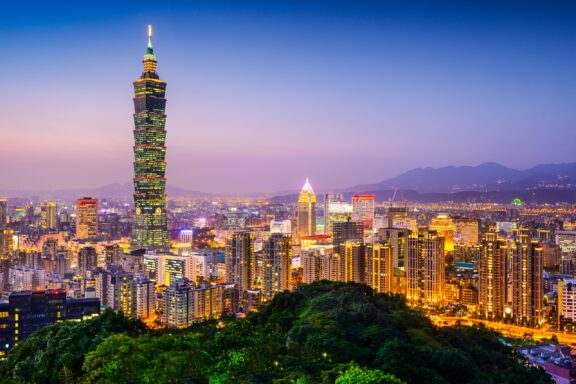
GDP (PPP) per capita: $59,398
The super-developed technology and manufacturing sectors in Taiwan’s diversified economy are part of what places the island state among the richest countries in Asia.
Alongside Singapore, Hong Kong, and South Korea, Taiwan is considered one of the “Four Asian Tigers” for its high-growth economy. The growth and industrialization experienced in Taiwan post-1960 have been referred to as the “Taiwan Miracle.”
In contrast to Asian neighbors South Korea and Japan, Taiwan’s economy is supported more by small and medium-sized enterprises than large corporations. High-tech manufacturing such as the production of semiconductors is one of the most productive industries in Taiwan.
6. United Arab Emirates
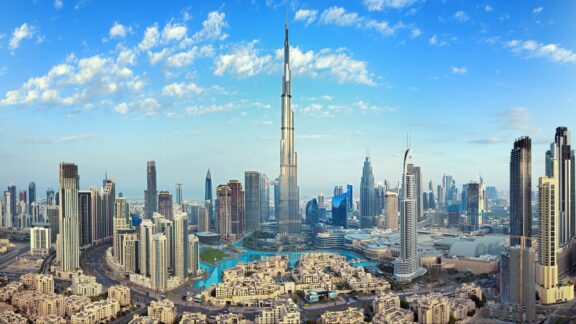
GDP (PPP) per capita: $59,844
The location of the United Arab Emirates on the eastern edge of the Arabian Peninsula makes it close in proximity to Asia, Europe, and Africa. This strategic location is just one of the factors contributing to the country’s wealth. Abundant oil reserves are also a major part of the country’s economy.
Finance, real estate, and tourism are some of the non-oil-sector industries that are being developed in the nation. Significant investments in the infrastructure of the United Arab Emirates are intended to help facilitate growing numbers of tourists.
The country’s impressive architecture, both old and new, is one of the many reasons tourists visit the United Arab Emirates.
5. Hong Kong
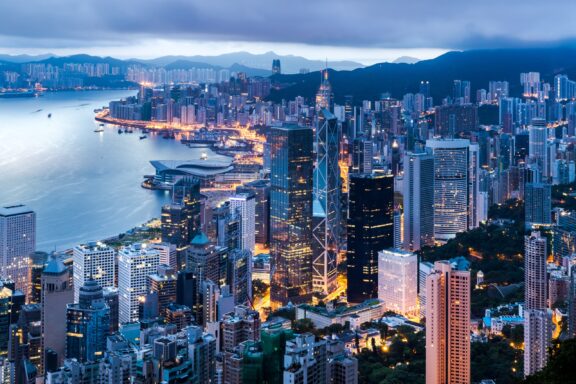
GDP (PPP) per capita: $62,839
Technically, Hong Kong is a special administrative region of China rather than a sovereign state. The reason we’ve included it in the list of richest countries in Asia is that it has a separate political and economic system from that of mainland China.
Low tax rates, minimal government intervention, and an established foreign financial market help the financial services industry thrive in Hong Kong.
Tourism and trade are also important sectors in the country’s economy, as Hong Kong provides a gateway to China. The airport in Hong Kong is the busiest in the world in terms of international cargo.
4. Brunei
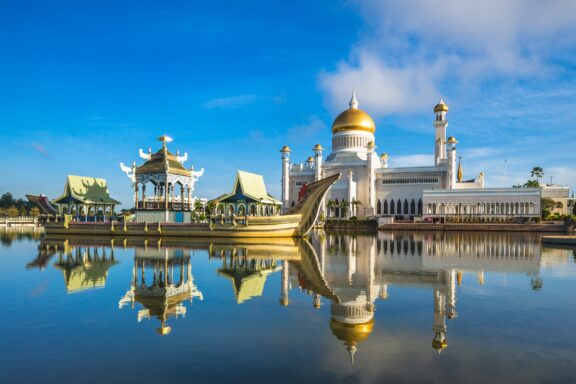
GDP (PPP) per capita: $64,405
If you can’t point to Brunei on a map, you’re probably not alone. It’s a very small nation in Southeast Asia, located on the island of Borneo. Malaysia and Indonesia are the other countries to occupy part of Borneo.
The economy of Brunei is largely centered around its plentiful oil and gas reserves, though the government is making efforts to diversify the economy. The country has high per-capita incomes and boasts the second-highest Human Development Index (HDI) score in Southeast Asia after Singapore.
One of the fastest-growing sectors in Brunei is the emerging tourist industry. Ecotourism and Islamic tourism are two areas that are being targeted.
3. Macau
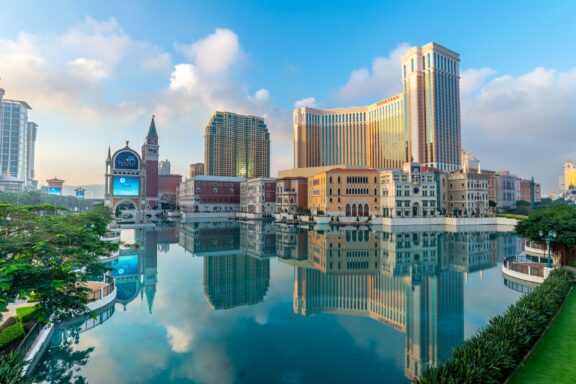
GDP (PPP) per capita: $90,606
As with Hong Kong, Macau isn’t actually a sovereign country; it is a special administrative region of China. Like Hong Kong, Macau has political and economic systems that are independent of mainland China.
Gaming is one of the most lucrative industries in Macau, for which it has a strong reputation. It has been called the “Las Vegas of the East,” and in fact has a gambling industry that is seven times larger than that of Las Vegas.
Gambling is illegal in both mainland China and Hong Kong, which allows Macau to have a legal monopoly on the gaming industry in the region.
2. Qatar
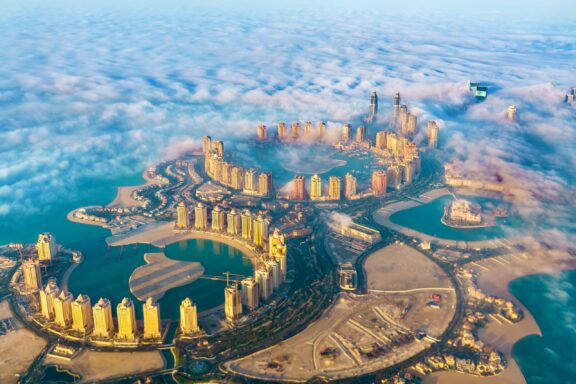
GDP (PPP) per capita: $97,262
Qatar is the second-richest country in Asia and one of the richest countries in the world. It’s located on the Arabian Peninsula, and as is the case with several Arab countries, the majority of its wealth is derived from its oil and gas reserves.
Before the discovery of oil, the pearl and fishing industries were the largest supporters of Qatar’s economy. Today, the fastest-growing industry in the country is tourism. Qatar allows nationals of 95 countries to enter without a visa, making it one of the most open countries in the Middle East.
1. Singapore
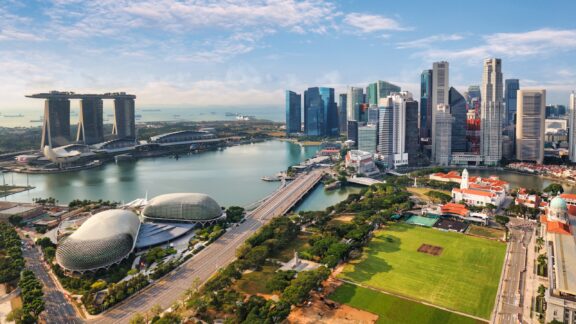
GDP (PPP) per capita: $102,742
Singapore is the richest country in Asia and the only with a GDP per capita that tops $100,000. In addition to its spot among the richest countries in the world, Singapore is also one of the smallest, and most educated countries in the world.
The economy of this highly developed nation is a free-market economy that is largely focused on trade, finance, and manufacturing. The country’s location has long made it a successful transshipment port engaging in international trade.
Singapore attracts foreign investments with a zero-tolerance policy toward corruption, low tax rates, and a skilled workforce. Low tax rates also make the country a tax haven for the wealthy.